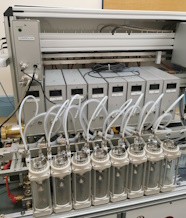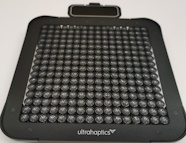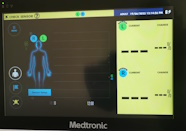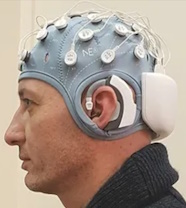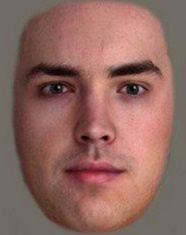2023
Journal - Research Article
Thomas, D. G., Tzeng, Y.-C., Galvosas, P., Harrison, F. G., Berry, M. J., Teal, P. D., Galvin, S. D., & Obruchkov, S. I. (2023). Single-sided magnet system for quantitative MR relaxometry and preclinical in-vivo monitoring. IEEE Transactions on Biomedical Engineering, 70(2), 671-680. doi: 10.1109/TBME.2022.3200626
Ali, H., Brooks, C., Tzeng, Y.-C., Crane, J., Beasley, R., Gibson, P., Pattemore, P., Stanley, T., Pearce, N., & Douwes, J. (2023). Heart rate variability as a marker of autonomic nervous system activity in young people with eosinophilic and non-eosinophilic asthma. Journal of Asthma, 60(3), 534-542. doi: 10.1080/02770903.2022.2070763
2022
Journal - Research Article
Thomas, D. G., Galvosas, P., Tzeng, Y.-C., Harrison, F. G., Berry, M. J., Teal, P. D., … Obruchkov, S. (2022). Oxygen saturation-dependent effects on blood transverse relaxation at low fields. Magnetic Resonance Materials in Physics, Biology & Medicine, 35, 805-815. doi: 10.1007/s10334-021-00993-2
Journal - Research Other
Labrecque, L., Smirl, J. D., Tzeng, Y.-C., & Brassard, P. (2022). We should take the direction of blood pressure change into consideration for dynamic cerebral autoregulation quantification [Point/counterpoint]. Journal of Cerebral Blood Flow & Metabolism, 42(12), 2351-2353. doi: 10.1177/0271678x221104868
Fan, J.-L., Nogueira, R. C., Brassard, P., Rickards, C. A., Page, M., Nasr, N., & Tzeng, Y.-C. (2022). Integrative physiological assessment of cerebral hemodynamics and metabolism in acute ischemic stroke. Journal of Cerebral Blood Flow & Metabolism, 42(3), 454-470. doi: 10.1177/0271678x211033732
Conference Contribution - Verbal presentation and other Conference outputs
Thomas, D., Harrison, F., Little, A., King, A., Sorby-Adams, A. J., Tzeng, S., … Obruchkov, S. (2022, May). Portable magnetic resonance based monitoring of MCA occlusion in an ovine sheep stroke model. Verbal presentation at the Joint Annual Meeting of the International Society for Magnetic Resonance in Medicine (ISMRM) & the European Society for Magnetic Resonance in Medicine & Biology (ESMRMB) and the 31st Annual Meeting of the International Society for Magnetic Resonance Radiographers & Technologists (ISMRT), [Hybrid].
Little, A., Thomas, D., Tzeng, S., & Obruchkov, S. (2022, May). Continuous perfusion measurement with single sided low-field MR. Verbal presentation at the Joint Annual Meeting of the International Society for Magnetic Resonance in Medicine (ISMRM) & the European Society for Magnetic Resonance in Medicine & Biology (ESMRMB) and the 31st Annual Meeting of the International Society for Magnetic Resonance Radiographers & Technologists (ISMRT), [Hybrid].
2021
Journal - Research Article
Ali, H., Brooks, C., Crane, J., Beasley, R., Holgate, S., Gibson, P., Pattemore, P., Tzeng, Y.-C., Stanley, T., … Douwes, J. (2021). Enhanced airway sensory nerve reactivity in non-eosinophilic asthma. BMJ Open Respiratory Research, 8, e000974. doi: 10.1136/bmjresp-2021-000974
Barclay, H., Mukerji, S., Kayser, B., O'Donnell, T., Tzeng, Y.-C., Hill, S., … Fan, J.-L. (2021). Respiratory alkalinization and posterior cerebral artery dilatation predict acute mountain sickness severity during 10 h normobaric hypoxia. Experimental Physiology, 106, 175-190. doi: 10.1113/EP088938
Journal - Research Other
Fong, D., Gradon, K., Barrett, C. J., Guild, S.-J., Tzeng, Y. C., Paton, J. F. R., & McBryde, F. D. (2021). A method to evaluate dynamic cerebral pressure-flow relationships in the conscious rat. Journal of Applied Physiology, 131, 1361-1369. doi: 10.1152/japplphysiol.00289.2021
Fan, J.-L., Brassard, P., Rickards, C. A., Nogueira, R. C., Nasr, N., McBryde, F. D., … Tzeng, Y.-C. (2021). Integrative cerebral blood flow regulation in ischemic stroke. Journal of Cerebral Blood Flow & Metabolism, 42(3), 387-403. doi: 10.1177/0271678x211032029
2020
Journal - Research Article
Fan, J.-L., O'Donnell, T., Lanford, J., Croft, K., Watson, E., Smyth, D., … Tzeng, Y.-C. (2020). Dietary nitrate reduces blood pressure and cerebral artery velocity fluctuations and improve cerebral autoregulation in transient ischemic attack patients. Journal of Applied Physiology, 129, 547-557. doi: 10.1152/japplphysiol.00160.2020
Conference Contribution - Published proceedings: Abstract
Ali, H., Brooks, C., Crane, J., Beasley, R., Le Gros, G., Holgate, S., … Pattemore, P., Tzeng, S., … Douwes, J. (2020). Autonomic nervous system activity in adolescent asthma. Respirology, 25(Suppl. 1), (pp. 38). doi: 10.1111/resp.13777
2019
Journal - Research Article
Fan, J.-L., O'Donnell, T., Gray, C. L., Croft, K., Noakes, A. K., Koch, H., & Tzeng, Y.-C. (2019). Dietary nitrate supplementation enhances cerebrovascular CO2 reactivity in a sex-specific manner. Journal of Applied Physiology, 127, 760-769. doi: 10.1152/japplphysiol.01116.2018
Journal - Research Other
Saleem, S., Sarafis, Z. K., Lee, A. H. X., Squair, J. W., Barak, O. F., Sober-Williams, E., … Tzeng, Y.-C., & Phillips, A. A. (2019). Spinal cord disruption is associated with a loss of Cushing-like blood pressure interactions. Journal of Neurotrauma, 36, 1487-1490. doi: 10.1089/neu.2018.5931
Saito-Benz, M., Gray, C., Tzeng, Y.-C., Atkinson, G., & Berry, M. J. (2019). Cerebral oxygenation and cardiorespiratory stability following liberal transfusion in preterm neonates [Brief report]. Acta Paediatrica, 108, 559-561. doi: 10.1111/apa.14631
Conference Contribution - Verbal presentation and other Conference outputs
Allan, P. D., Saleem, S., O'Donnell, T., Fan, J.-L., Larsen, P. D., Berry, M. J., & Tzeng, Y.-C. (2019, September). New approaches to assessing and optimising cerebral perfusion. Verbal presentation at the Medical Sciences Congress (MedSci), Queenstown, New Zealand.
2018
Journal - Research Article
Allan, P. D., Tzeng, Y.-C., Gowing, E. K., Clarkson, A. N., & Fan, J.-L. (2018). Dietary nitrate supplementation reduces low frequency blood pressure fluctuations in rats following distal middle cerebral artery occlusion. Journal of Applied Physiology, 125(3), 862-869. doi: 10.1152/japplphysiol.01081.2017
Saleem, S., Vucina, D., Sarafis, Z., Lee, A. H. X., Squair, J. W., Barak, O. F., … Tzeng, Y.-C., & Phillips, A. A. (2018). Wavelet decomposition analysis is a clinically relevant strategy to evaluate cerebrovascular buffering of blood pressure after spinal cord injury. American Journal of Physiology: Heart & Circulatory Physiology, 314(5), H1108-H1114. doi: 10.1152/ajpheart.00152.2017
Saleem, S., Teal, P. D., Howe, C. A., Tymko, M. M., Ainslie, P. N., & Tzeng, Y.-C. (2018). Is Cushing mechanism a dynamic blood pressure stabilizing system? Insights from Granger causality analysis of spontaneous blood pressure and cerebral blood flow. American Journal of Physiology: Regulatory, Integrative & Comparative Physiology, 315(3), R484-R495. doi: 10.1152/ajpregu.00032.2018
Allan, P. D., O'Donnell, T., & Tzeng, Y.-C. (2018). Agreement between finger plethysmography- and brachial oscillometry-derived blood pressure measurements. Clinical Physiology & Functional Imaging, 38(3), 439-446. doi: 10.1111/cpf.12435
Journal - Research Other
Saito-Benz, M., Murphy, W. G., Tzeng, Y.-C., Atkinson, G., & Berry, M. J. (2018). Storage after gamma irradiation affects in vivo oxygen delivery capacity of transfused red blood cells in preterm infants. Transfusion, 58, 2108-2112. doi: 10.1111/trf.14764
Tzeng, Y. C., & Panerai, R. B. (2018). CrossTalk proposal: Dynamic cerebral autoregulation should be quantified using spontaneous blood pressure fluctuations: Rebuttal from Y. C. Tzeng and R. B. Panerai. Journal of Physiology, 596(1), 11-12. doi: 10.1113/jp275040
Tzeng, Y. C., & Panerai, R. B. (2018). CrossTalk proposal: Dynamic cerebral autoregulation should be quantified using spontaneous blood pressure fluctuations. Journal of Physiology, 596(1), 3-5. doi: 10.1113/jp273899
Conference Contribution - Published proceedings: Full paper
Smirl, J. D., Wright, A. D., Ainslie, P. N., Tzeng, Y.-C., & van Donkelaar, P. (2018). Differential systolic and diastolic regulation of the cerebral pressure-flow relationship during squat-stand manoeuvres. In T. Heldt (Ed.), Intracranial Pressure & Neuromonitoring XVI (Acta Neurochirurgica Suppl. 126). (pp. 263-268). Cham, Switzerland: Springer International. doi: 10.1007/978-3-319-65798-1_52
2017
Journal - Research Article
Malenfant, S., Brassard, P., Paquette, M., Le Blanc, O., Chouinard, A., Nadeau, V., Allan, P. D., Tzeng, Y.-C., … Provencher, S. (2017). Compromised cerebrovascular regulation and cerebral oxygenation in pulmonary arterial hypertension. Journal of the American Heart Association, 6(10), e006126. doi: 10.1161/jaha.117.006126
Witter, T., Tzeng, Y.-C., O'Donnell, T., Kusel, J., Walker, B., Berry, M., & Taylor, C. E. (2017). Inter-individual relationships between sympathetic arterial baroreflex function and cerebral perfusion control in healthy males. Frontiers in Neuroscience, 11, 457. doi: 10.3389/fnins.2017.00457
Saleem, S., Tzeng, Y.-C., Kleijn, W. B., & Teal, P. D. (2017). Detection of impaired sympathetic cerebrovascular control using functional biomarkers based on principal dynamic mode analysis. Frontiers in Physiology, 7, 685. doi: 10.3389/fphys.2016.00685
Phillips, A. A., Squair, J., Currie, K., Tzeng, Y.-C., Ainslie, P., & Krassioukov, A. V. (2017). 2015 ParaPan American Games: Autonomic function, but not physical activity, is associated with vascular-cognitive impairment in spinal cord injury. Journal of Neurotrauma, 34(6), 1283-1288. doi: 10.1089/neu.2016.4751
Faulkner, J., Tzeng, Y.-C., Lambrick, D., Woolley, B., Allan, P. D., O'Donnell, T., Lanford, J., Wong, L., & Stoner, L. (2017). A randomized controlled trial to assess the central hemodynamic response to exercise in patients with transient ischaemic attack and minor stroke. Journal of Human Hypertension, 31, 172-177. doi: 10.1038/jhh.2016.72
Conference Contribution - Published proceedings: Abstract
Saito Benz, M., Tzeng, Y. C., Gately, C., Elder, D., & Berry, M. (2017). Effect of elective blood transfusion on cerebral and somatic tissue oxygenation and cardio-respiratory stability in infants with anaemia of prematurity. Journal of Paediatrics & Child Health, 53(Suppl. 2), (pp. 87). doi: 10.1111/jpc.13494_255
Conference Contribution - Verbal presentation and other Conference outputs
Saito Benz, M., Murphy, W. G., Tzeng, S. Y. C., Atkinson, G., & Berry, M. J. (2017, September). Effects of irradiation and storage on the oxygen carrying capacity of red blood cells given to preterm infants with anaemia of prematurity. Verbal presentation at the Fetal and Neonatal Physiological Society 44th Annual Meeting, Osaka, Japan.
2016
Journal - Research Article
Saleem, S., Teal, P. D., Kleijn, W. B., Ainslie, P. N., & Tzeng, Y.-C. (2016). Identification of human sympathetic neurovascular control using multivariate wavelet decomposition analysis. American Journal of Physiology: Heart & Circulatory Physiology, 311(3), H837-H848. doi: 10.1152/ajpheart.00254.2016
Smirl, J. D., Hoffman, K., Tzeng, Y.-C., Hansen, A., & Ainslie, P. N. (2016). The relationship between blood pressure and cerebral blood flow during supine cycling: Influence of aging. Journal of Applied Physiology, 120(5), 552-563. doi: 10.1152/japplphysiol.00667.2015
Conference Contribution - Published proceedings: Abstract
Phillips, A., Squair, J. W., Currie, K., Tzeng, S. Y. C., Ainslie, P. N., & Krassioukov, A. V. (2016). 2015 Parapan American Games: Does physical activity participation improve cerebrovascular function after high-level spinal cord injury? FASEB Journal, 30(1, Suppl.), 1288.9. doi: 10.1096/fj.1530-6860
2015
Journal - Research Article
Allan, P. D., Faulkner, J., O'Donnell, T., Lanford, J., Wong, L., Saleem, S., … Tzeng, Y.-C. (2015). Hemodynamic variability and cerebrovascular control after transient cerebral ischemia. Physiological Reports, 3(11), e12602. doi: 10.14814/phy2.12602
Saleem, S., Teal, P. D., Kleijn, W. B., O'Donnell, T., Witter, T., & Tzeng, Y.-C. (2015). Non-linear characterisation of cerebral pressure-flow dynamics in humans. PLoS ONE, 10(9), e0139470. doi: 10.1371/journal.pone.0139470
Horsman, H. M., Peebles, K. C., & Tzeng, Y. C. (2015). Interactions between breathing rate and low-frequency fluctuations in blood pressure and cardiac intervals. Journal of Applied Physiology, 119, 793-798. doi: 10.1152/japplphysiol.00525.2015
Smirl, J. D., Hoffman, K., Tzeng, Y.-C., Hansen, A., & Ainslie, P. N. (2015). Methodological comparison of active- and passive-driven oscillations in blood pressure: Implications for the assessment of cerebral pressure-flow relationships. Journal of Applied Physiology, 119(5), 487-501. doi: 10.1152/japplphysiol.00264.2015
Rickards, C. A., Sprick, J. D., Colby, H. B., Kay, V., & Tzeng, Y.-C. (2015). Coupling between arterial pressure, cerebral blood velocity, and cerebral tissue oxygenation with spontaneous and forced oscillations. Physiological Measurement, 36(4), 785-801. doi: 10.1088/0967-3334/36/4/785
Conference Contribution - Published proceedings: Abstract
Allan, P., Faulkner, J., O'Donnell, T., Lanford, J., Witter, T., Woolley, B., Berry, M., … Tzeng, Y.-C. (2015). Cerebrovascular function is preserved following transient ischaemic attack and minor stroke. FASEB Journal, 29(1, Suppl.), 833.7. Retrieved from http://www.fasebj.org/content/29/1_Supplement/833.7.abstract
Witter, T., Taylor, C., O'Donnell, T., Kusel, J., Allan, P., Berry, M., Walker, B., & Tzeng, Y.-C. (2015). Inter-individual relationships between sympathetic arterial baroreflex function and cerebral perfusion control in healthy males. FASEB Journal, 29(1, Suppl.), 833.6. Retrieved from http://www.fasebj.org/content/29/1_Supplement/833.6.abstract
Saleem, S., Teal, P., Kleijn, W. B., O'Donnell, T., Witter, T., & Tzeng, Y.-C. (2015). Non-linear relationships between blood pressure and cerebral blood flow. FASEB Journal, 29(1, Suppl.), 833.3. Retrieved from http://www.fasebj.org/content/29/1_Supplement/833.3.abstract
Tzeng, Y.-C. (2015). Evidence for bi-directional feedback regulation of blood pressure and cerebral blood flow in humans. FASEB Journal, 29(1, Suppl.), 833.8. Retrieved from http://www.fasebj.org/content/29/1_Supplement/833.8.abstract
O'Donnell, T., MacRae, B., Berry, M., & Tzeng, Y.-C. (2015). The effects of preterm brith on cerebral pressure-flow dynamics. FASEB Journal, 29(1, Suppl.), 684.5. Retrieved from http://www.fasebj.org/content/29/1_Supplement/684.5.abstract
2014
Journal - Research Article
Smirl, J. D., Haykowsky, M. J., Nelson, M. D., Tzeng, Y.-C., Marsden, K. R., Jones, H., & Ainslie, P. N. (2014). Relationship between cerebral blood flow and blood pressure in long-term heart transplant recipients. Hypertension, 64, 1314-1320. doi: 10.1161/hypertensionaha.114.04236
Horsman, H. M., Tzeng, Y. C., Galletly, D. C., & Peebles, K. C. (2014). The repeated sit-to-stand manoeuvre is a superior method for cardiac baroreflex assessment: A comparison with the modified Oxford method and Valsalva manoeuvre. American Journal of Physiology: Regulatory, Integrative & Comparative Physiology, 307(11), R1345-R1352. doi: 10.1152/ajpregu.00376.2014
Tzeng, Y. C., MacRae, B. A., Ainslie, P. N., & Chan, G. S. H. (2014). Fundamental relationships between blood pressure and cerebral blood flow in humans. Journal of Applied Physiology, 117(9), 1037-1048. doi: 10.1152/japplphysiol.00366.2014
Berry, M., Tzeng, Y., & Marsland, C. (2014). Percutaneous transtracheal ventilation in an obstructed airway model in post-apnoeic sheep. British Journal of Anaesthesia, 113(6), 1039-1045. doi: 10.1093/bja/aeu188
Rickards, C. A., & Tzeng, Y.-C. (2014). Arterial pressure and cerebral blood flow variability: Friend or foe? A review. Frontiers in Physiology, 5, 120. doi: 10.3389/fphys.2014.00120
Taylor, C. E., Willie, C. K., Ainslie, P. N., & Tzeng, Y.-C. (2014). Assessment of human baroreflex function using carotid ultrasonography: What have we learnt? Acta Physiologica, 211(2), 297-313. doi: 10.1111/apha.12302
Meel-van den Abeelen, A. S. S., Simpson, D. M., Wang, L. J. Y., Slump, C. H., Zhang, R., Tarumi, T., … Tzeng, Y.-C., … Claassen, J. A. H. R. (2014). Between-centre variability in transfer function analysis, a widely used method for linear quantification of the dynamic pressure-flow relation: The CARNet study. Medical Engineering & Physics, 36(5), 620-627. doi: 10.1016/j.medengphy.2014.02.002
Smirl, J. D., Tzeng, Y. C., Monteleone, B. J., & Ainslie, P. N. (2014). Influence of cerebrovascular resistance on the dynamic relationship between blood pressure and cerebral blood flow in humans. Journal of Applied Physiology, 116(12), 1614-1622. doi: 10.1152/japplphysiol.01266.2013
Willie, C. K., Tzeng, Y.-C., Fisher, J. A., & Ainslie, P. N. (2014). Integrative regulation of human brain blood flow. Journal of Physiology, 592(5), 841-859. doi: 10.1113/jphysiol.2013.268953
Tzeng, Y.-C., & Ainslie, P. N. (2014). Blood pressure regulation IX: Cerebral autoregulation under blood pressure challenges. European Journal of Applied Physiology, 114(3), 545-559. doi: 10.1007/s00421-013-2667-y
Journal - Research Other
Berretta, A., Tzeng, Y.-C., & Clarkson, A. N. (2014). Post-stroke recovery: The role of activity-dependent release of brain-derived neurotrophic factor. Expert Review of Neurotherapeutics, 14(11), 1335-1344. doi: 10.1586/14737175.2014.969242
Conference Contribution - Published proceedings: Full paper
Rickards, C. A., & Tzeng, Y.-C. (2014). Blood pressure and cerebral blood flow oscillations: Friend or foe? Proceedings of the 8th European Study Group on Cardiovascular Oscillations (ESGCO) Conference. (pp. 179-180). IEEE. doi: 10.1109/esgco.2014.6847578
Conference Contribution - Published proceedings: Abstract
Allan, P., O'Donnell, T., Berry, M., Faulkner, J., Lambrick, D., Stoner, L., … Tzeng, Y.-C. (2014). Fundamental relationships between blood pressure and cerebral blood flow following acute ischaemic stroke. Proceedings of the Medical Sciences Congress (MedSci). (pp. 39). Retrieved from http://www.physoc.org.nz/meetings/archive/medsci-2014-abstracts
Tzeng, Y.-C. (2014). Integrative regulation of brain blood flow: Translating physiological curiosities into clinical applications. Proceedings of the Medical Sciences Congress (MedSci). (pp. 11). Retrieved from http://www.physoc.org.nz/meetings/archive/medsci-2014-abstracts
Witter, T., MacRae, B., O'Donnell, T., Berry, M., & Tzeng, Y. C. (2014). Interindividual relationships between blood pressure and cerebral blood flow variability. FASEB Journal, 28(1, Suppl.), 1184.11. [Abstract]
Horsman, H., Tzeng, S., Galletly, D., & Peebles, K. (2014). Reliability of the repeated sit-to-stand manoeuvre for assessing baroreflex sensitivity and its suitability for assessing hysteresis. FASEB Journal, 28(1, Suppl.), 852.4. [Abstract]
Conference Contribution - Poster Presentation (not in published proceedings)
Allan, P., O'Donnell, T., Berry, M., Faulkner, J., Lambrick, D., Stoner, L., … Tzeng, Y.-C. (2014, September). Fundamental relationships between blood pressure and cerebral blood flow following acute ischaemic stroke. Poster session presented at the Division of Health Sciences Research Forum: Learning Different Research Languages, Dunedin, New Zealand.
Conference Contribution - Verbal presentation and other Conference outputs
Tzeng, S. (2014, June). Intergrative regulation of brain blood flow: Translating physiological curiosities into clinical applications. Verbal presentation at the 8th Annual Brain Health Research Centre Conference, Dunedin, New Zealand.
Tzeng, S. (2014, September). Information matters: Identifying new targets for management and therapy in acute stroke. Plenary presentation at the New Zealand Applied Neurosciences Conference (NZANC), Auckland, New Zealand.
2013
Journal - Research Article
Peebles, K. C., Horsman, H., & Tzeng, Y.-C. (2013). The influence of tobacco smoking on the relationship between pressure and flow in the middle cerebral artery in humans. PLoS ONE, 8(8), e72624. doi: 10.1371/journal.pone.0072624
Tan, C. O., Tzeng, Y.-C., Hamner, J. W., Tamisier, R., & Taylor, J. A. (2013). Alterations in sympathetic neurovascular transduction during acute hypoxia in humans. American Journal of Physiology: Regulatory, Integrative & Comparative Physiology, 304(11), R959-R965. doi: 10.1152/ajpregu.00071.2013
Willie, C. K., Ainslie, P. N., Taylor, C. E., Eves, N. D., & Tzeng, Y.-C. (2013). Maintained cerebrovascular function during post-exercise hypotension. European Journal of Applied Physiology, 113(6), 1597-1604. doi: 10.1007/s00421-012-2578-3
Tzeng, Y.-C., & MacRae, B. A. (2013). Interindividual relationships between blood pressure and cerebral blood flow variability with intact and blunted cerebrovascular control. Journal of Applied Physiology, 114(7), 888-895. doi: 10.1152/japplphysiol.01388.2012
Taylor, C. E., Willie, C. K., Atkinson, G., Jones, H., & Tzeng, Y.-C. (2013). Postural influences on the mechanical and neural components of the cardiovagal baroreflex. Acta Physiologica, 208(1), 66-73. doi: 10.1111/apha.12087
Horsman, H. M., Peebles, K. C., Galletly, D. C., & Tzeng, Y.-C. (2013). Cardiac baroreflex gain is frequency dependent: Insights from repeated sit-to-stand maneuvers and the modified Oxford Method. Applied Physiology, Nutrition & Metabolism, 38(7), 753-759. doi: 10.1139/apnm-2012-0444
Journal - Research Other
Tzeng, Y. C., & Ainslie, P. N. (2013). Quantification of cerebral hemodynamics. European Journal of Applied Physiology, 113(11), 2869-2870. doi: 10.1007/s00421-013-2719-3
Conference Contribution - Published proceedings: Abstract
Tzeng, Y. C. (2013). New insights into the physiology and pathology of autoregulation. Cerebrovascular Diseases, 35(Suppl. 2), (pp. 5). doi: 10.1159/000351748
Serrador, J. M., Tosto, J., & Tzeng, S. (2013). Effects of binge drinking on brain blood flow. FASEB Journal, 27(Meeting Abstract Suppl.), 1186.12. [Abstract]
Conference Contribution - Verbal presentation and other Conference outputs
Tzeng, S. (2013, September). A role for translational physiology? Verbal presentation at the Linking Businesses with Academia Forum: Smart Materials and Devices, Dunedin, New Zealand.
Tzeng, S. (2013, September). Lullabies or Lady Gaga? How your blood pressure variability affects your brain. Verbal presentation at the Ozone Research Group Public Symposium, Dunedin, New Zealand.
Peebles, K. C., Ball, O. G., Horsman, H. M., MacRae, B. A., & Tzeng, Y. C. (2013, August). Sympathetic regulation of the human cerebrovascular response to carbon dioxide. Verbal presentation at the Medical Sciences Congress (MedSci), Queenstown, New Zealand.
Tzeng, S. (2013, August). Brain under pressure: Challenges to cerebral blood flow regulation. Verbal presentation at the Medical Sciences Congress (MedSci), Queenstown, New Zealand.
2012
Journal - Research Article
Hamner, J. W., Tan, C. O., Tzeng, Y.-C., & Taylor, J. A. (2012). Cholinergic control of the cerebral vasculature in humans. Journal of Physiology, 590(24), 6343-6352. doi: 10.1113/jphysiol.2012.245100
Ainslie, P. N., Lucas, S. J. E., Fan, J.-L., Thomas, K. N., Cotter, J. D., Tzeng, Y. C., & Burgess, K. R. (2012). Influence of sympathoexcitation at high altitude on cerebrovascular function and ventilatory control in humans. Journal of Applied Physiology, 113(7), 1058-1067. doi: 10.1152/japplphysiol.00463.2012
Sin, P. Y. W., Webber, M. R., Galletly, D. C., & Tzeng, Y. C. (2012). Relationship between cardioventilatory coupling and pulmonary gas exchange. Clinical Physiology & Functional Imaging, 32(6), 476-480. doi: 10.1111/j.1475-097X.2012.01144.x
Tzeng, Y. C., Ainslie, P. N., Cooke, W. H., Peebles, K. C., Willie, C. K., MacRae, B. A., … Horsman, H. M., & Rickards, C. A. (2012). Assessment of cerebral autoregulation: The quandary of quantification. American Journal of Physiology: Heart & Circulatory Physiology, 303(6), H658-H671. doi: 10.1152/ajpheart.00328.2012
Peebles, K. C., Ball, O. G., MacRae, B. A., Horsman, H. M., & Tzeng, Y. C. (2012). Sympathetic regulation of the human cerebrovascular response to carbon dioxide. Journal of Applied Physiology, 113(5), 700-706. doi: 10.1152/japplphysiol.00614.2012
Gelinas, J. C., Marsden, K. R., Tzeng, Y. C., Smirl, J. D., Smith, K. J., Willie, C. K., … Ainslie, P. N. (2012). Influence of posture on the regulation of cerebral perfusion. Aviation, Space, & Environmental Medicine, 83(8), 751-757. doi: 10.3357/asem.3269.2012
Willie, C. K., Macleod, D. B., Shaw, A. D., Smith, K. J., Tzeng, Y. C., Eves, N. D., … Ainslie, P. N. (2012). Regional brain blood flow in man during acute changes in arterial blood gases. Journal of Physiology, 590(14), 3261-3275. doi: 10.1113/jphysiol.2012.228551
Marsden, K. R., Haykowsky, M. J., Smirl, J. D., Jones, H., Nelson, M. D., Altamirano-Diaz, L. A., … Tzeng, Y. C., … Ainslie, P. N. (2012). Aging blunts hyperventilation-induced hypocapnia and reduction in cerebral blood flow velocity during maximal exercise. Age, 34(3), 725-735. doi: 10.1007/s11357-011-9258-9
Journal - Research Other
Tzeng, Y.-C., MacRae, B., & Rickards, C. (2012). A recipe for reducing blood pressure variability: Adding blood flow to the mix. Hypertension, 60(2), e12. doi: 10.1161/hypertensionaha.112.198531
2011
Journal - Research Article
Bellapart, J., Chan, G. S., Tzeng, Y.-C., Ainslie, P., Barnett, A. G., Dunster, K. R., … Fraser, J. F. (2011). The effect of Ventricular Assist Devices on cerebral autoregulation: A preliminary study. BMC Anesthesiology, 11, 4. doi: 10.1186/1471-2253-11-4
Bellapart, J., Chan, G. S. H., Tzeng, Y.-C., Ainslie, P. N., Dunster, K. R., Barnett, A. G., … Fraser, J. F. (2011). The effect of ventricular assist devices on cerebral blood flow and blood pressure fractality. Physiological Measurement, 32(9), 1361-1372. doi: 10.1088/0967-3334/32/9/001
Tzeng, Y.-C., & Chan, G. S. H. (2011). Unraveling the human cerebral circulation: Insights from cerebral blood pressure and flow recordings. Journal of Applied Physiology, 111(2), 349-350. doi: 10.1152/japplphysiol.00715.2011
Jones, H., Lewis, N. C. S., Green, D. J., Ainslie, P. N., Lucas, S. J. E., Tzeng, Y.-C., Grant, E. J. M., & Atkinson, G. (2011). α1-adrenoreceptor activity does not explain lower morning endothelial-dependent, flow-mediated dilation in humans. American Journal of Physiology: Regulatory, Integrative & Comparative Physiology, 300(6), R1437-R1442. doi: 10.1152/ajpregu.00042.2011
Taylor, C. E., Atkinson, G., Willie, C. K., Jones, H., Ainslie, P. N., & Tzeng, Y.-C. (2011). Diurnal variation in the mechanical and neural components of the baroreflex. Hypertension, 58(1), 51-56. doi: 10.1161/HYPERTENSIONAHA.111.171512
Tzeng, Y.-C., Chan, G. S. H., Willie, C. K., & Ainslie, P. N. (2011). Determinants of human cerebral pressure-flow velocity relationships: New insights from vascular modelling and Ca2+ channel blockade. Journal of Physiology, 589(13), 3263-3274. doi: 10.1113/jphysiol.2011.206953
Chan, G. S. H., Ainslie, P. N., Willie, C. K., Taylor, C. E., Atkinson, G., Jones, H., … Tzeng, Y.-C. (2011). Contribution of arterial Windkessel in low-frequency cerebral hemodynamics during transient changes in blood pressure. Journal of Applied Physiology, 110(4), 917-925. doi: 10.1152/japplphysiol.01407.2010
Willie, C. K., Cowan, E. C., Ainslie, P. N., Taylor, C. E., Smith, K. J., Sin, P. Y. W., & Tzeng, Y. C. (2011). Neurovascular coupling and distribution of cerebral blood flow during exercise. Journal of Neuroscience Methods, 198(2), 270-273. doi: 10.1016/j.jneumeth.2011.03.017
Willie, C. K., Ainslie, P. N., Taylor, C. E., Jones, H., Sin, P. Y. W., & Tzeng, Y.-C. (2011). Neuromechanical features of the cardiac baroreflex after exercise. Hypertension, 57, 927-933. doi: 10.1161/HYPERTENSIONAHA.110.164616
Willie, C. K., Colino, F. L., Bailey, D. M., Tzeng, Y. C., Binsted, G., Jones, L. W., … Lucas, S. J., … Ainslie, P. N. (2011). Utility of transcranial Doppler ultrasound for the integrative assessment of cerebrovascular function. Journal of Neuroscience Methods, 196(2), 221-237. doi: 10.1016/j.jneumeth.2011.01.011
Atkinson, G., Batterham, A. M., Jones, H., Taylor, C. E., Willie, C. K., & Tzeng, Y.-C. (2011). Appropriate within-subjects statistical models for the analysis of baroreflex sensitivity. Clinical Physiology & Functional Imaging, 31(1), 80-82. doi: 10.1111/j.1475-097X.2010.00974.x
Lewis, N. C. S., Atkinson, G., Lucas, S. J. E., Grant, E. J. M., Jones, H., Tzeng, Y. C., Horsman, H., & Ainslie, P. N. (2011). Is there diurnal variation in initial and delayed orthostatic hypotension during standing and head-up tilt? Chronobiology International, 28(2), 135-145. doi: 10.3109/07420528.2010.536283
Journal - Research Other
Tzeng, Y. C. (2011). Assessment of cerebral autoregulation in human research [Letter to the editor]. Acta Neurologica Scandinavica, 123(6), 434. doi: 10.1111/j.1600-0404.2010.01470.x
2010
Journal - Research Article
Lewis, N. C. S., Atkinson, G., Lucas, S. J. E., Grant, E. J. M., Jones, H., Tzeng, Y. C., Horsman, H., & Ainslie, P. N. (2010). Diurnal variation in time to presyncope and associated circulatory changes during a controlled orthostatic challenge. American Journal of Physiology: Regulatory, Integrative & Comparative Physiology, 68(1), R55-R61. doi: 10.1152/ajpregu.00030.2010
Sin, P. Y. W., Webber, M. R., Galletly, D. C., Ainslie, P. N., Brown, S. J., Willie, C. K., Sasse, A., Larsen, P. D., & Tzeng, Y.-C. (2010). Interactions between heart rate variability and pulmonary gas exchange efficiency in humans. Experimental Physiology, 95(7), 788-797. doi: 10.1113/expphysiol.2010.052910
Tzeng, Y.-C., Willie, C. K., Atkinson, G., Lucas, S. J. E., Wong, A., & Ainslie, P. N. (2010). Cerebrovascular regulation during transient hypotension and hypertension in humans. Hypertension, 56, 268-273. doi: 10.1161/HYPERTENSIONAHA.110.152066
Larsen, P. D., Tzeng, Y. C., Sin, P. Y. W., & Galletly, D. C. (2010). Respiratory sinus arrhythmia in conscious humans during spontaneous respiration. Respiratory Physiology & Neurobiology, 174(1-3), 111-118. doi: 10.1016/j.resp.2010.04.021
Sin, P. Y. W., Galletly, D. C., & Tzeng, Y. C. (2010). Influence of breathing frequency on the pattern of respiratory sinus arrhythmia and blood pressure: Old questions revisited. American Journal of Physiology: Heart & Circulatory Physiology, 298, H1588-H1599. doi: 10.1152/ajpheart.00036.2010
Tzeng, Y.-C., Lucas, S. J. E., Atkinson, G., Willie, C. K., & Ainslie, P. N. (2010). Fundamental relationships between arterial baroreflex sensitivity and dynamic cerebral autoregulation in humans. Journal of Applied Physiology, 108, 1162-1168. doi: 10.1152/japplphysiol.01390.2009
Lucas, S. J. E., Tzeng, Y. C., Galvin, S. D., Thomas, K. N., Ogoh, S., & Ainslie, P. N. (2010). Influence of changes in blood pressure on cerebral perfusion and oxygenation. Hypertension, 55, 698-705. doi: 10.1161/HYPERTENSIONAHA.109.146290
Ogoh, S., Tzeng, Y.-C., Lucas, S. J. E., Galvin, S. D., & Ainslie, P. N. (2010). Influence of baroreflex-mediated tachycardia on the regulation of dynamic cerebral perfusion during acute hypotension in humans. Journal of Physiology, 588(2), 365-371. doi: 10.1113/jphysiol.2009.180844
Journal - Research Other
Ainslie, P. N., & Tzeng, Y. C. (2010). On the regulation of the blood supply to the brain: Old age concepts and new age ideas [Invited editorial]. Journal of Applied Physiology, 108(6), 1447-1449. doi: 10.1152/japplphysiol.00257.2010
Lucas, S. J. E., Tzeng, Y. C., & Ainslie, P. N. (2010). Response to The cerebrovascular pressure-flow relationship: A simple concept but a complex phenomenon [Letter]. Hypertension, 56, e3. doi: 10.1161/HYPERTENSIONAHA.110.153312
Tzeng, Y. C., Willie, C. K., & Ainslie, P. N. (2010). Baroreflex, cerebral perfusion, and stroke: Integrative physiology at its best [Letter to the editor]. Stroke, 41(5), e429. doi: 10.1161/STROKEAHA.109.570853
Journal - Professional & Other Non-Research Articles
Willie, C. K., & Tzeng, Y. C. (2010). Study of the heterogeneity of cardiovascular function should extend to the human cerebral circulation [Letter]. American Journal of Physiology: Regulatory, Integrative & Comparative Physiology, 298(6), R1705. doi: 10.1152/ajpregu.00166.2010
Conference Contribution - Published proceedings: Abstract
Willie, C. K., Taylor, C., Ainslie, P. N., Sin, P. Y., Jones, H., & Tzeng, Y. C. (2010). Exacerbation of post-exercise cardiovagal baroreflex hysteresis is explained by selective reductions in carotid baroreflex neural transduction. Proceedings of The Physiological Society. 19. London: Physiological Society. Retrieved from http://www.physoc.org/custom2/publications/proceedings/search/rsindex.asp
Webber, M. R., Sin, P. Y., Ainslie, P. N., Tzeng, Y. C., Brown, S. J., Willie, C. K., Sasse, A. S., & Larsen, P. (2010). Heart rate variability and cardiorespiratory efficiency in humans. Heart, Lung & Circulation, 19(Suppl. 1), (pp. S34). doi: 10.1016/j.hlc.2010.04.073
Conference Contribution - Poster Presentation (not in published proceedings)
Sin, P., Webber, M., Galletly, D., Ainslie, P., Brown, S., Willie, C., Sasse, A., Larsen, P., & Tzeng, Y.-C. (2010, September). Interactions between heart rate variability and pulmonary gas exchange efficiency in humans. Poster session presented at the Fourth Annual Division of Health Sciences Research Forum, Dunedin, New Zealand.
Conference Contribution - Verbal presentation and other Conference outputs
Sin, P. Y. W., Webber, M. R., Galletly, D. C., Ainslie, P. N., Brown, S. J., Willie, C. K., Sasse, A., Larsen, P. D., & Tzeng, Y.-C. (2010, November-December). Interactions between heart rate variability and pulmonary gas exchange efficiency in humans. Verbal presentation at the Medical Sciences Congress: A New Decade of Discovery (MedSciNZ), Queenstown, New Zealand.
2009
Journal - Research Article
Tzeng, Y. C., Sin, P. Y. W., Lucas, S. J. E., & Ainslie, P. N. (2009). Respiratory modulation of cardio-vagal baroreflex sensitivity. Journal of Applied Physiology, 107, 718-724. doi: 10.1152/japplphysiol.00548.2009
Tzeng, Y.-C., Sin, P. Y. W., & Galletly, D. C. (2009). Human sinus arrhythmia: Inconsistencies of a teleological hypothesis. American Journal of Physiology: Heart & Circulatory Physiology, 296(1), H65-H70. doi: 10.1152/ajpheart.00716.2008
Journal - Research Other
Ainslie, P. N., Willie, C. K., & Tzeng, Y. C. (2009). Role of SNA in the pathophysiology of cardiovascular collapse during syncope: Muscle vs. Brain [Letter]. Journal of Physiology, 587(23), 5795-5796. doi: 10.1113/jphysiol.2009.182667
Tzeng, S. Y. C., Sin, P. Y. W., & Ainslie, P. N. (2009). Sinus arrhythmia and baroreflex sensitivity: Intimate relationship or separate identities? [Letter to the editor]. Journal of Applied Physiology, 106(5), 1745-1746.
Conference Contribution - Published proceedings: Abstract
Tzeng, Y. C., Sin, P. Y. W., Lucas, S. J. E., & Ainslie, P. N. (2009). Respiratory modulation of baroreflex sensitivity. Autonomic Neuroscience. 149(1-2), (pp. 110-111). doi: 10.1016/j.autneu.2009.05.209
Sin, P. Y. W., Tzeng, Y. C., & Galletly, D. (2009). Cardioventilatory coupling and pulmonary gas exchange efficiency in humans. Autonomic Neuroscience. 149(1-2), (pp. 75). doi: 10.1016/j.autneu.2009.05.133
Conference Contribution - Verbal presentation and other Conference outputs
Galvin, S. D., Lucas, S. J. E., Thomas, K. N., Tzeng, Y.-C., & Ainslie, P. N. (2009, April). Identification of static cerebral autoregulation in healthy humans. Verbal presentation at the Tongariro Cardiac Surgery Meeting, Rotorua, New Zealand.
2008
Conference Contribution - Published proceedings: Abstract
Sin, P. Y., Tzeng, Y. C., & Galletly, D. C. (2008). Respiratory sinus arrhythmia and the distribution of heartbeats throughout the respiratory cycle. Proceedings of The Physiological Society. 11. London: Physiological Society. Retrieved from http://www.physoc.org/custom2/publications/proceedings/search/rsindex.asp
Conference Contribution - Verbal presentation and other Conference outputs
Sin, P. Y. W., Tzeng, Y. C., & Galletly, D. C. (2008, November). Respiratory sinus arrhythmia in the anaesthetized rat model. Verbal presentation at the Medical Sciences Congress, Queenstown, New Zealand.
2007
Journal - Research Article
Tzeng, Y. C., Larsen, P. D., & Galletly, D. C. (2007). Mechanism of cardioventilatory coupling: Insights from cardiac pacing, vagotomy, and sinoaortic denervation in the anesthetized rat. American Journal of Physiology: Heart & Circulatory Physiology, 292, H1967-H1977. doi: 10.1152/ajpheart.01049.2006
Tzeng, Y. C., Larsen, P. D., & Galletly, D. C. (2007). Effects of hypercapnia and hypoxemia on respiratory sinus arrhythmia in conscious humans during spontaneous respiration. American Journal of Physiology: Heart & Circulatory Physiology, 292, H2397-H2407. doi: 10.1152/ajpheart.00817.2006
2005
Journal - Research Article
Tzeng, Y.-C., Galletly, D. C., & Larsen, P. D. (2005). Paradoxical respiratory sinus arrhythmia in the anesthetized rat. Autonomic Neuroscience, 118(1-2), 25-31.
Williamson, L. J., Larsen, P. D., Tzeng, Y.-C., & Galletly, D. C. (2005). Effect of automatic external defibrillator audio prompts on cardiopulmonary resuscitation performance. Emergency Medicine Journal, 22(2), 140-143.
2004
Journal - Research Article
Larsen, P. D., Elder, D. E., Tzeng, Y.-C., Campbell, A., & Galletly, D. C. (2004). Fractal characteristics of breath to breath timing in sleeping infants. Respiratory Physiology & Neurobiology, 139(3), 263-270.
2003
Journal - Research Article
Larsen, P. D., Tzeng, Y.-C., & Galletly, D. C. (2003). Quantal ventilatory variability during spontaneous breathing anaesthesia. British Journal of Anaesthesia, 91(2), 184-189.
Tzeng, Y.-C., Larsen, P. D., & Galletly, D. C. (2003). Cardioventilatory coupling in resting human subjects. Experimental Physiology, 88.6, 775-782.
Larsen, P. D., Tzeng, Y.-C., & Galletly, D. C. (2003). Inspiratory coupling to cardiac activity and to somatic afferent nerve stimulation in the anaesthetised rat. Autonomic Neuroscience, 108, 45-49.
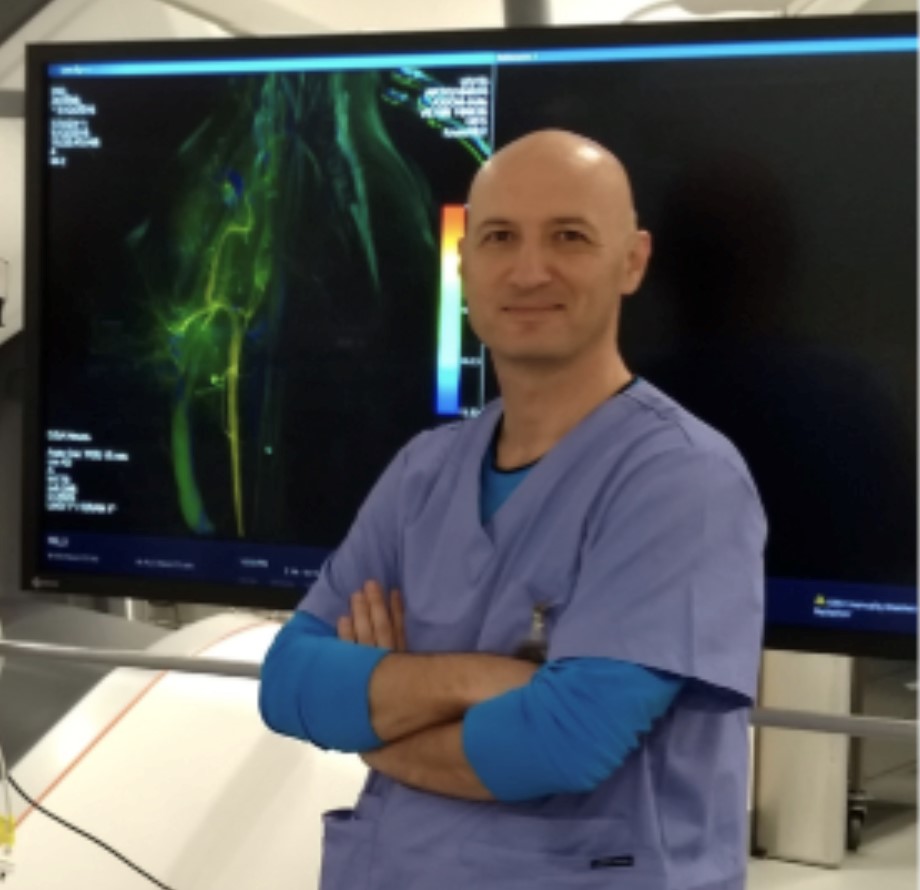 Associate Professor Cakmak
Associate Professor Cakmak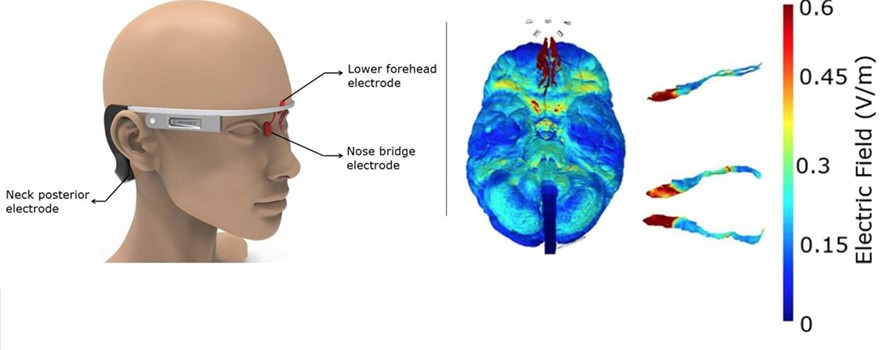
![]()
